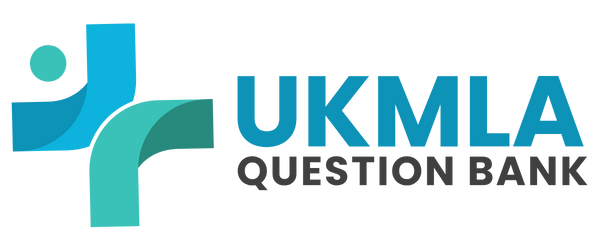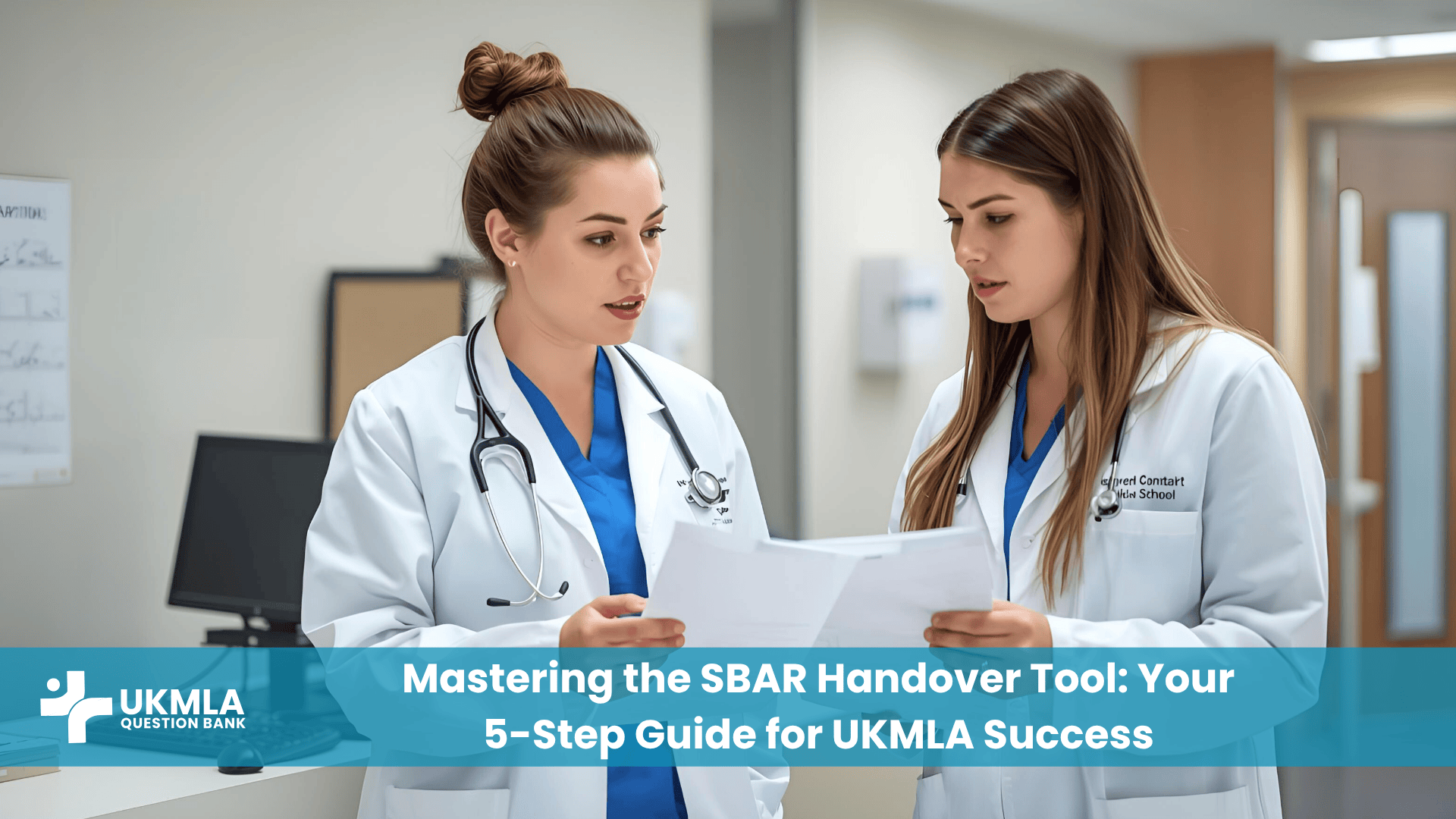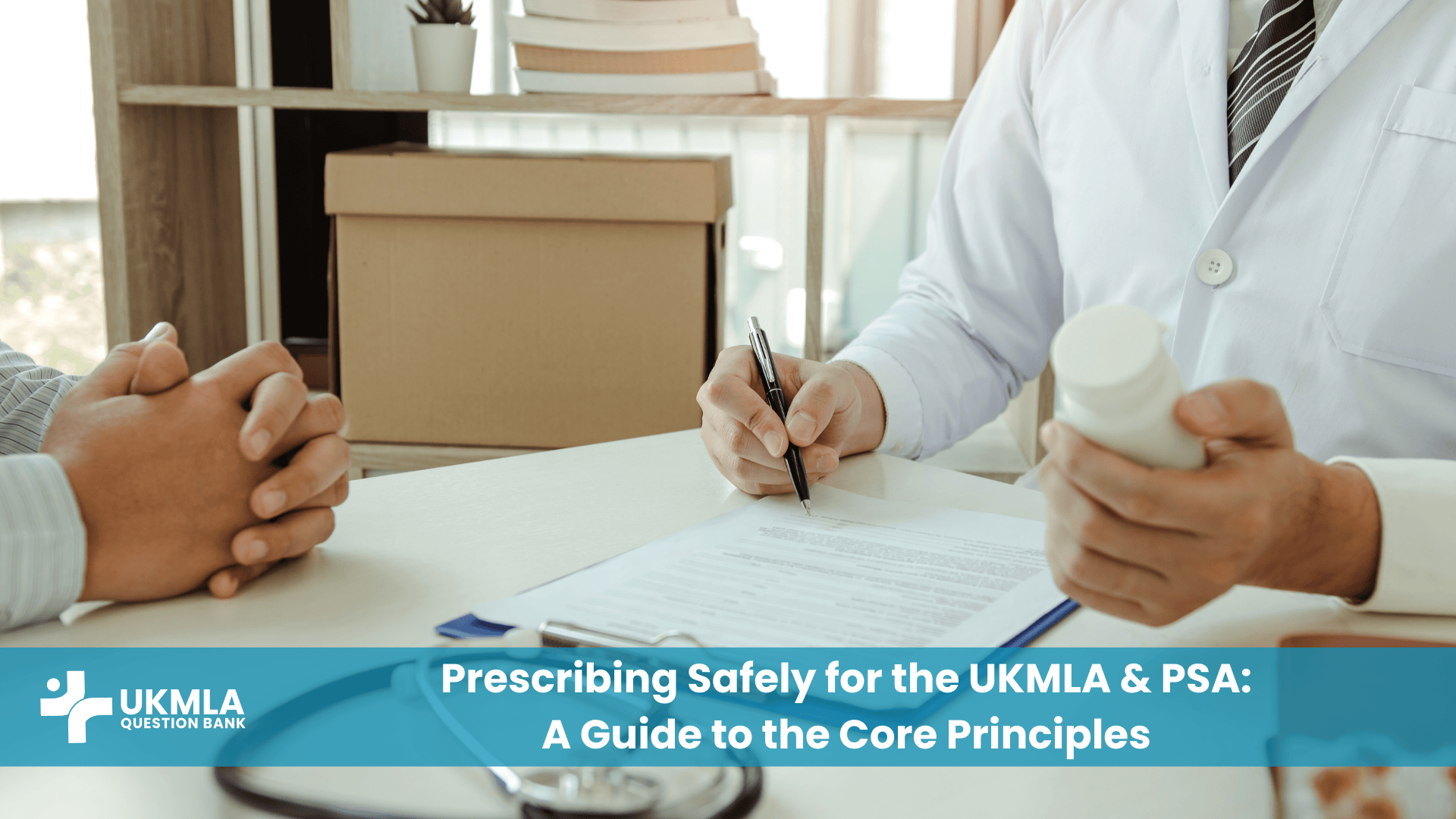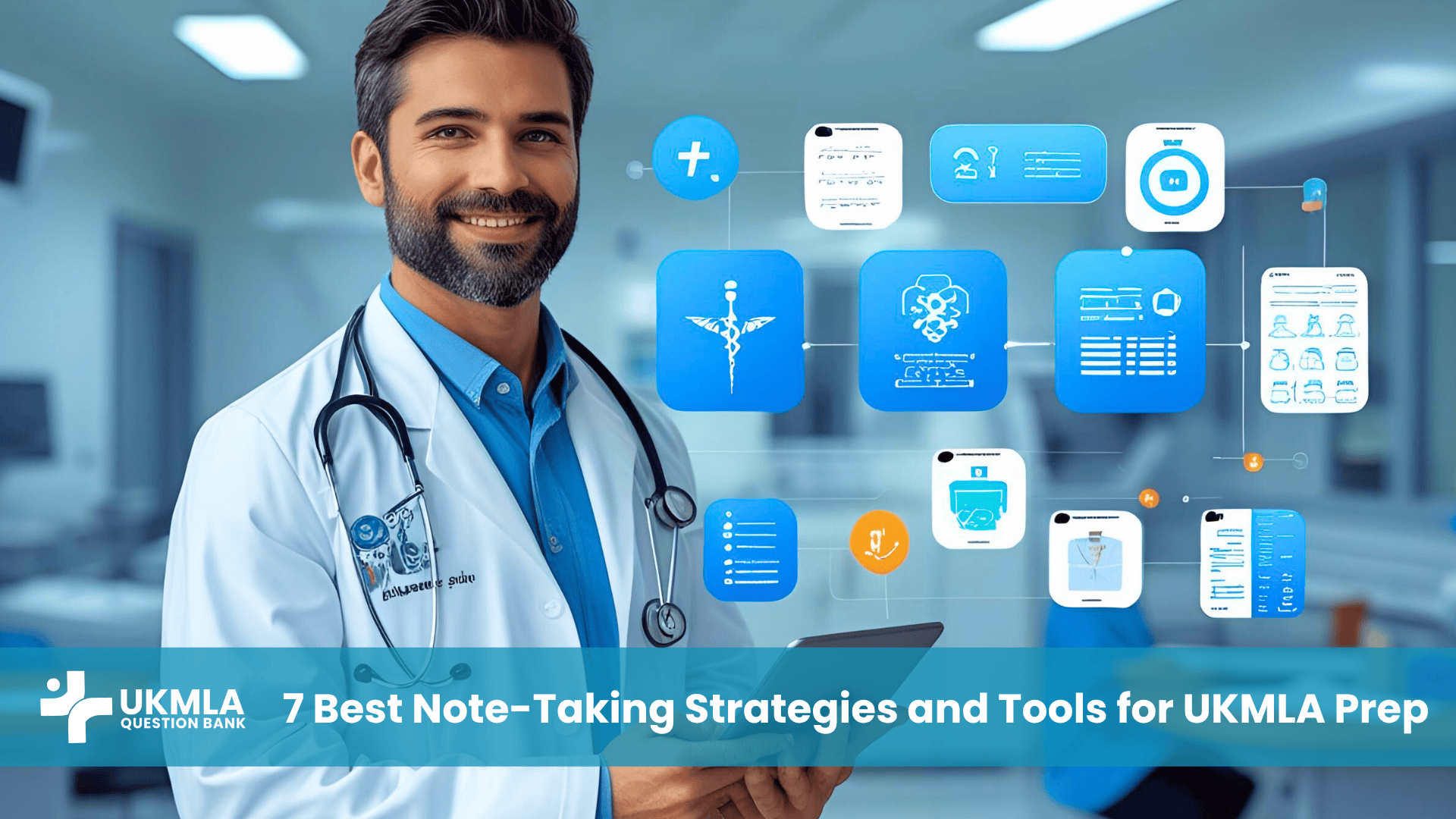The process of choosing the right UKMLA question bank is one of the first and most significant decisions you will make in your exam preparation. The online market is crowded with options, each proclaiming to be the ultimate key to success. This abundance of choice can lead to a state of “analysis paralysis,” where the fear of picking the wrong resource feels almost as daunting as the exam itself. I remember a colleague during my own preparation who subscribed to three different question banks simultaneously, believing more was better. In reality, they ended up using each one superficially and never truly mastered any of them—a costly and ineffective strategy.
Choosing the wrong question bank can mean more than just wasted money; it can mean hundreds of hours spent on low-yield questions with superficial explanations, leading to stagnant scores and a false sense of security. The right question bank, however, becomes more than a resource; it becomes your personal tutor, your diagnostic tool, and your training partner, actively shaping your clinical reasoning and building your confidence.
This guide provides a systematic, 5-step framework to help you navigate your options. We will move beyond the marketing claims and teach you how to critically evaluate each resource, ensuring you select a question bank that aligns with the official UKMLA curriculum, enhances your specific learning style, and offers the best possible value for your investment.
Key Takeaways
GMC Alignment is Non-Negotiable: The first and most important step is to verify that the question bank is explicitly designed around the official GMC UKMLA Content Map.
Quality of Explanations Over Quantity of Questions: A question bank’s true value lies in its detailed explanations. Prioritize resources that explain not just why the correct answer is right, but why all the distractors are wrong.
Analytics are Your Personal Tutor: Use the performance data provided by a question bank to diagnose your weaknesses accurately. Features like peer comparison and topic-specific breakdowns are invaluable.
Match Features to Your Learning Style: The best resource for you is one that aligns with how you learn best. Visual learners need diagrams, while active learners might prioritize a good mobile app for on-the-go practice.
Assess Value, Not Just Price: The cheapest option is rarely the best. Consider the quality of the content, the features offered, and the length of the subscription to determine the true cost-to-value ratio.
A 5-Step Guide to Choosing the Right UKMLA Question Bank
Step 1: Verify Core Alignment with the GMC UKMLA Content Map
This is the most critical, non-negotiable first step. Any resource not explicitly built around the official GMC UKMLA Content Map is not fit for purpose. The UKMLA is a specific exam, and your primary study tool must reflect its unique curriculum and focus. A rebranded resource for a different exam, like the PLAB or USMLE, will not adequately prepare you.
What does “alignment” actually mean?
Domains and Presentations: The UKMLA Content Map is organized into three overarching themes (e.g., “Readiness for Safe Practice“) and six domains of clinical practice. A high-quality question bank should allow you to see how its questions are tagged to these specific domains and the list of patient presentations. This proves they have built their content around the official blueprint.
Professional Skills: The exam tests more than just clinical knowledge. It assesses your understanding of professional skills, ethics, and law. The question bank should have questions that integrate these themes into clinical vignettes, just as the real exam does. Our guide, Professionalism and Patient Safety in the UKMLA CPSA, explores this in more detail.
When you are browsing a question bank’s website, look for explicit mentions of the “GMC Content Map” or the “MLA Blueprint.” If this information is not prominent, treat it as a significant red flag.
Step 2: Evaluate the Quality and Depth of Explanations
The number of questions a bank offers is a vanity metric. A resource with 5,000 questions and one-line explanations is infinitely less valuable than one with 2,500 questions and detailed, expert-written tutorials for each one. The learning does not happen when you click an answer; it happens when you engage with the explanation.
A Word from a Medical Educator: “Students often obsess over the number of questions a bank has. The expert learner obsesses over the quality of the explanations. A single, well-explained question is more valuable than ten poorly explained ones. The learning is in the review.”
When evaluating a free trial, assess the explanations against these criteria:
Explains All Options: Does it clearly explain why the correct answer is the “single best” option and, just as importantly, provide a concise rationale for why every other distractor is incorrect?
Provides Context: Does it go beyond the immediate question to provide relevant pathophysiology, epidemiology, or clinical context?
Integrates Visuals: Does it include helpful diagrams, flowcharts, clinical images (X-rays, ECGs, photos), or tables to summarize complex information?
References Guidelines: Does it reference key UK guidelines, such as those from NICE, to support its management recommendations? This demonstrates that the content is authoritative and aligned with UK practice.
Step 3: Assess the Analytics and Performance Tracking Features
A modern question bank is a powerful diagnostic tool. The analytics dashboard is your personal tutor, pointing out exactly where you need to focus your efforts. This is a crucial element when choosing the right UKMLA question bank. Do not settle for a resource that only gives you a basic percentage score.
Table 1: Feature Comparison: Q-Bank Analytics Tiers
| Analytics Tier | Features | What It Tells You |
|---|---|---|
| Basic (Avoid) | – Overall percentage correct only. | Very little. This is insufficient for targeted revision. |
| Intermediate (Good) | – Performance breakdown by specialty (e.g., Cardiology, Renal). – Peer percentile ranking (e.g., “You are in the 75th percentile”). |
Your broad strengths and weaknesses. How you compare to the average user. |
| Advanced (Ideal) | – All Intermediate features. – Performance by specific topic/sub-topic (e.g., “Asthma,” “AKI”). – Time analysis (average time per question). – Ability to create custom tests based on incorrect/flagged questions. |
Your precise knowledge gaps. Whether you have issues with speed or specific question types. Allows for highly targeted, efficient revision. |
Key Point: Your question bank data is your roadmap. Use it to guide your study. If your analytics show a 45% score in Endocrinology, that tells you exactly what chapter you need to read next. This “test-enhanced learning” is far more efficient than passively reading everything. You can learn more about this in our guide on Analysing Your UKMLA Question Bank Performance.
Step 4: Consider Your Personal Learning Style
The single “best” question bank does not exist. The best one for you is one that has features that align with your natural learning style. Before you subscribe, take a moment to reflect on how you learn most effectively. This is a core part of choosing the right UKMLA question bank.
Key Point: If you are a strong visual learner, prioritize a question bank that integrates plenty of diagrams, flowcharts, and high-quality clinical images directly into its explanations. Text-only explanations will be less effective for you, no matter how well-written they are.
Table 2: Matching Q-Bank Features to Your Learning Style
| Learning Style | Key Q-Bank Features to Look For |
|---|---|
| Visual Learner | – High-quality clinical images (ECGs, X-rays). – Integrated diagrams, charts, and summary tables in explanations. – Embedded videos. |
| Auditory Learner | – Explanations that can be read aloud by text-to-speech software. – Links to relevant podcasts or audio summaries. |
| Read/Write Learner | – Detailed, well-structured text explanations. – Ability to copy-paste text to create personal notes or flashcards. – A built-in notes feature. |
| Kinesthetic (Active) Learner | – A high-quality, fully-functional mobile app for on-the-go practice. – Interactive features like digital flashcards. – The ability to create custom quizzes to actively test yourself. |
H3: Step 5: Read Reviews and Consider the Cost-to-Value Ratio
Finally, before you commit, do your due diligence. Look for authentic, recent reviews from other UKMLA candidates. Good places to look include university medical society forums, Reddit communities (like r/JuniorDoctorsUK), and trusted blog reviews. Be wary of reviews posted directly on the company’s own website, as they may be curated.
Then, assess the true value. Don’t just look at the price. Consider:
Subscription Length: Is it a 3-month or 12-month subscription? A longer subscription can offer better value if you plan to start early.
Number of ‘Resets’: Some banks limit how many times you can reset your performance data.
Feature Set: A slightly more expensive q-bank with advanced analytics (Step 3) and features that match your learning style (Step 4) offers a much higher return on investment than a cheaper, more basic option.
Key Point: The most expensive resource is not automatically the best. A mid-priced question bank with superior explanations and analytics offers far more value than a costly one with superficial content.
Frequently Asked Questions (FAQ) Your UKMLA Question Bank Questions Answered
It is almost always better to choose one high-quality question bank and master it completely. Using multiple banks often leads to superficial learning and can be confusing if there are minor differences in content or style.
Prices vary significantly, but you can generally expect to pay between £100 and £300 for a 6-12 month subscription to a reputable, high-quality resource.
While some free resources can be useful for supplementary practice, they rarely offer the depth of explanation, range of questions, or advanced analytics needed for comprehensive UKMLA preparation. A paid question bank is a necessary investment for most candidates.
A question bank is a large library of practice questions used for learning and targeted revision over many months. A mock exam is a full-length, timed simulation of the real exam, designed to be used in the final weeks of preparation to assess stamina and performance under pressure.
It’s best to purchase it when you begin your dedicated revision period, typically 6-9 months before your exam date. This gives you ample time to work through the questions systematically without rushing.
While question banks are primarily designed for the AKT (the knowledge test), the clinical reasoning skills you develop by working through vignettes are highly valuable for the CPSA. The scenarios provide excellent templates for understanding clinical presentations.
Most companies explicitly forbid sharing accounts in their terms of service. More importantly, sharing an account makes the performance analytics useless, as your personal data will be mixed with your friend’s, defeating the purpose of diagnosing your individual weaknesses.
It means the questions have been written and reviewed to specifically test the knowledge, skills, and professional behaviours outlined in the official GMC UKMLA Content Map, ensuring the content is relevant to what will be on the actual exam.
This depends entirely on your learning style. If you are an active learner who likes to do questions on your commute or during breaks, a well-designed, fully-functional mobile app is an essential feature. For others, it may be less of a priority.
This is why it’s crucial to take full advantage of any free trial period offered. Spend several hours using the trial to rigorously assess the platform against the 5 steps in this guide before you commit to a purchase.
Conclusion
The task of choosing the right UKMLA question bank is your first major strategic decision in the long journey of exam preparation. By moving beyond marketing claims and applying this systematic 5-step evaluation process, you can make an informed choice with confidence.
Start by ensuring absolute alignment with the GMC Content Map, then rigorously assess the quality of the explanations—this is where the real learning lies. Use the analytics features as your personal diagnostic tool and select a resource that complements your unique learning style. Finally, weigh the cost against the true value offered. This deliberate, thoughtful approach will ensure the tool you choose becomes a powerful asset in your journey to How to Pass the UKMLA: Essential Tips for Success.
Call to Action:
Now that you know how to choose your most important tool, learn the optimal way to use it. Read our guide on The Best Way to Use UKMLA Question Banks for Maximum Benefit to build a powerful and effective study strategy.




